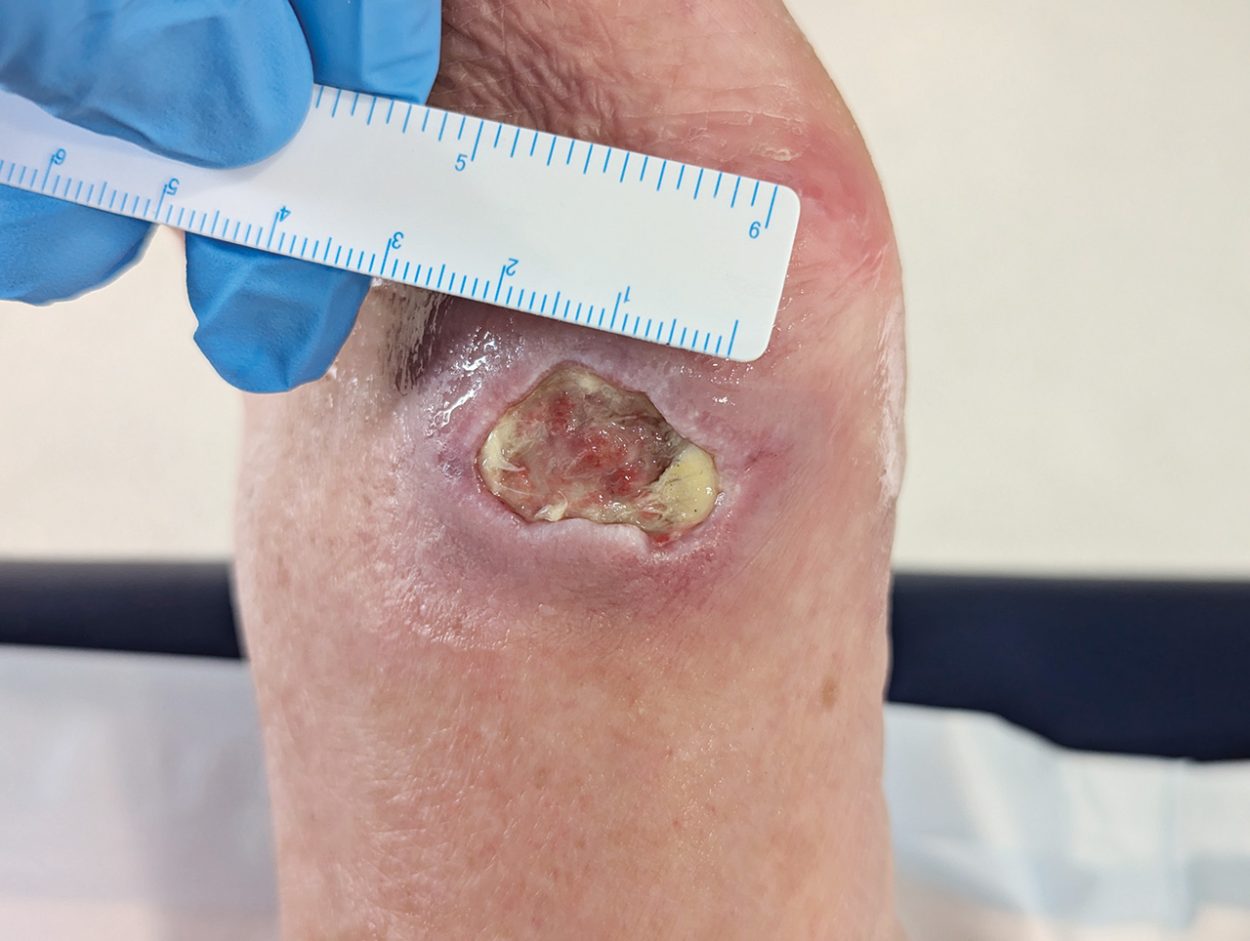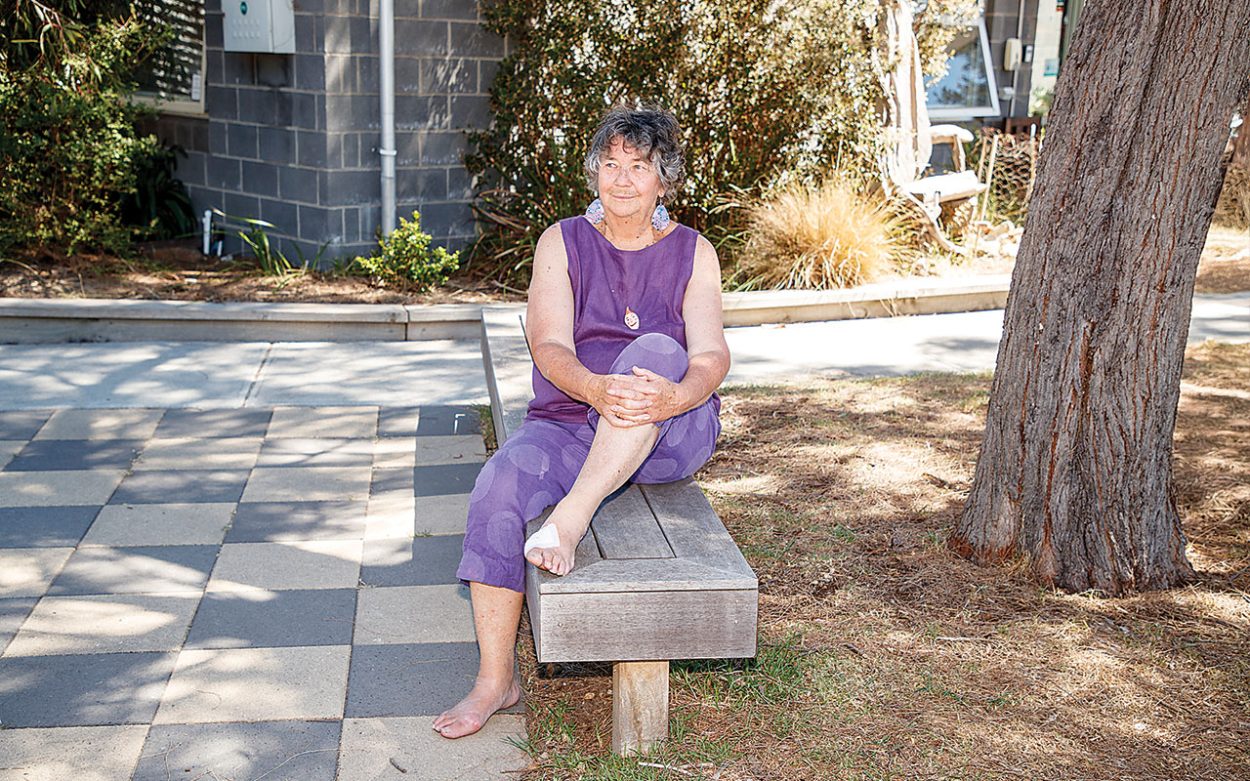CASES of Buruli ulcer continue to remain high in Victoria with the Mornington Peninsula one of the infection’s hotspots. Department of Health data shows that as of 17 December 2024, there had been 344 cases notified for the year, only slightly lower than the 362 cases notified for the same time period in 2023; the highest year on record since the emergence of the infection in Victoria in 2004.
Buruli ulcer is a bacterial infection linked to mosquitos that can cause significant skin damage. The condition can be treated with antibiotics, making early diagnosis and treatment vital. Symptoms for the infection include spots that look like insect bites, ulcers, painful lumps, limb swelling, redness of the skin and is sometimes accompanied by severe pain and fever. The infection can develop into a significant ulcer-like infection as the flesh-eating bacteria takes hold, with potentially life-altering outcomes for patients if not treated quickly and aggressively.
Rye resident Marg D’Arcy has had her own battle with what she refers to as “that bastard Buruli”. D’Arcy’s first brush with the infection was in October 2021 when she consulted doctors about an itchy red spot on her wrist that wouldn’t go away. A biopsy confirmed it was Buruli and, although caught early, a four-week course of strong antibiotics were required to prevent the infection developing into an ulcer.
Fast tracking to September last year, D’Arcy developed a hot and swollen foot. Her doctor diagnosed it as cellulitis, and prescribed antibiotics. The swelling subsided, but after finishing the course of antibiotics, returned. “It was around this time in this frustrating ordeal that a small open wound developed,” said D’Arcy. “Now things were getting serious.”

It was off to Frankston Emergency Medical clinic, then to another clinic when things didn’t improve. Several doctors were consulted, and they all agreed it was cellulitis, and prescribed more antibiotics. Things still didn’t improve. “Perhaps the turning point was when one of the doctors called in a nurse who turned out to be my saviour!” said D’Arcy. “She suggested that we do a biopsy because it looked like a Buruli. A week later her suspicions were confirmed”.
It was now off to a dedicated Buruli ulcer clinic in Sorrento run by Dr Dan Roberts who travels from Geelong to consult with patients from the peninsula. “By this time, the ulcer had grown to be the size of a ten-cent piece,” said D’Arcy. The next couple of months were a cacophony of medical interventions, nasty antibiotics, anxiety and changed routines to get on top of the infection. “The antibiotics were horrible. And I needed to have regular nurse visits to monitor the size of the ulcer,” said D’Arcy. “I had to change my lifestyle; no alcohol, constant dressing changes, and no swimming unless the EPA said the water was clean.”
Now, five months after the initial red spot, the wound is shrinking with new skin starting to grow. “I didn’t let the ulcer stop me. I have continued to work and done a couple of trips in my campervan, but it was a difficult time,” said D’Arcy. “People would say ‘how’s the foot?’. It wasn’t the infection that knocked me around, but rather the antibiotics that did me the most harm. I was exhausted, sometimes nauseous, and occasionally quite grumpy! The antibiotics were just terrible.”
D’Arcy contacted The News as she wanted to tell her tale so others may benefit from her experience.
“My advice is if you have an itch or a spot that you are concerned about – see your doctor immediately,” said D’Arcy. “In my case it was the nurse in both instances who recognised the potential for it to be a Buruli. Don’t be afraid of asking your doctor if it could be a Buruli. Insist on a biopsy! The earlier it is identified, the easier it is to treat!”
First published in the Mornington News – 18 February 2025




